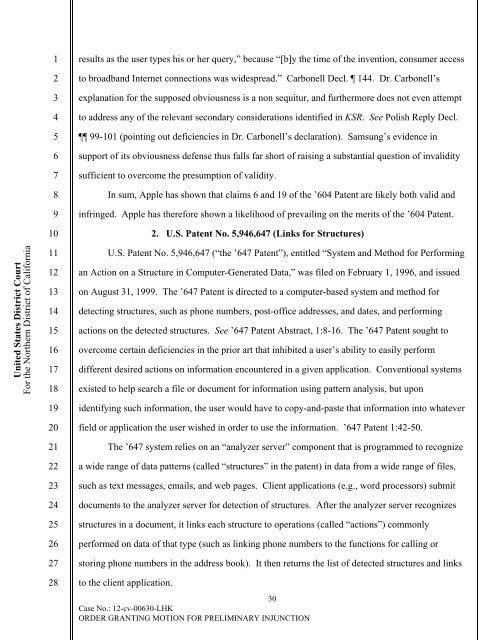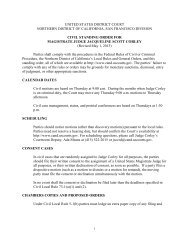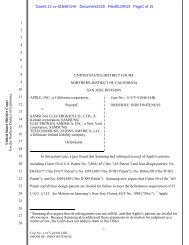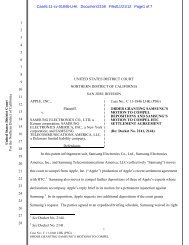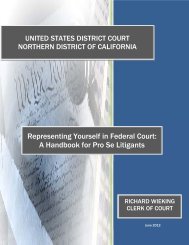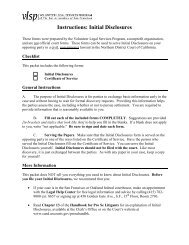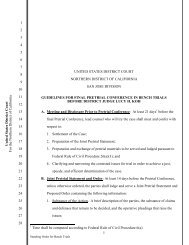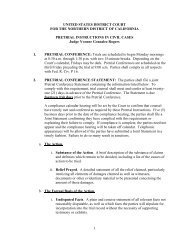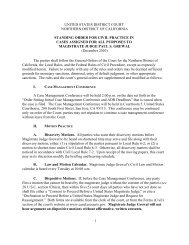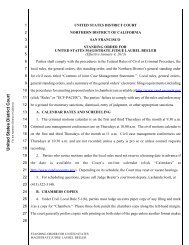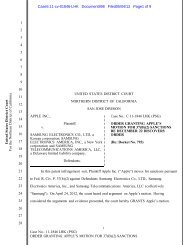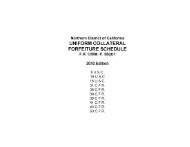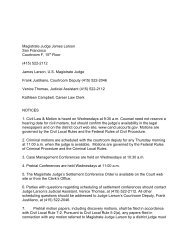Order Granting Motion For Preliminary Injunction - United States ...
Order Granting Motion For Preliminary Injunction - United States ...
Order Granting Motion For Preliminary Injunction - United States ...
Create successful ePaper yourself
Turn your PDF publications into a flip-book with our unique Google optimized e-Paper software.
<strong>United</strong> <strong>States</strong> District Court<br />
<strong>For</strong> the Northern District of California<br />
1<br />
2<br />
3<br />
4<br />
5<br />
6<br />
7<br />
8<br />
9<br />
10<br />
11<br />
12<br />
13<br />
14<br />
15<br />
16<br />
17<br />
18<br />
19<br />
20<br />
21<br />
22<br />
23<br />
24<br />
25<br />
26<br />
27<br />
28<br />
results as the user types his or her query,” because “[b]y the time of the invention, consumer access<br />
to broadband Internet connections was widespread.” Carbonell Decl. 144. Dr. Carbonell’s<br />
explanation for the supposed obviousness is a non sequitur, and furthermore does not even attempt<br />
to address any of the relevant secondary considerations identified in KSR. See Polish Reply Decl.<br />
99-101 (pointing out deficiencies in Dr. Carbonell’s declaration). Samsung’s evidence in<br />
support of its obviousness defense thus falls far short of raising a substantial question of invalidity<br />
sufficient to overcome the presumption of validity.<br />
In sum, Apple has shown that claims 6 and 19 of the ’604 Patent are likely both valid and<br />
infringed. Apple has therefore shown a likelihood of prevailing on the merits of the ’604 Patent.<br />
2. U.S. Patent No. 5,946,647 (Links for Structures)<br />
U.S. Patent No. 5,946,647 (“the ’647 Patent”), entitled “System and Method for Performing<br />
an Action on a Structure in Computer-Generated Data,” was filed on February 1, 1996, and issued<br />
on August 31, 1999. The ’647 Patent is directed to a computer-based system and method for<br />
detecting structures, such as phone numbers, post-office addresses, and dates, and performing<br />
actions on the detected structures. See ’647 Patent Abstract, 1:8-16. The ’647 Patent sought to<br />
overcome certain deficiencies in the prior art that inhibited a user’s ability to easily perform<br />
different desired actions on information encountered in a given application. Conventional systems<br />
existed to help search a file or document for information using pattern analysis, but upon<br />
identifying such information, the user would have to copy-and-paste that information into whatever<br />
field or application the user wished in order to use the information. ’647 Patent 1:42-50.<br />
The ’647 system relies on an “analyzer server” component that is programmed to recognize<br />
a wide range of data patterns (called “structures” in the patent) in data from a wide range of files,<br />
such as text messages, emails, and web pages. Client applications (e.g., word processors) submit<br />
documents to the analyzer server for detection of structures. After the analyzer server recognizes<br />
structures in a document, it links each structure to operations (called “actions”) commonly<br />
performed on data of that type (such as linking phone numbers to the functions for calling or<br />
storing phone numbers in the address book). It then returns the list of detected structures and links<br />
to the client application.<br />
30<br />
Case No.: 12-cv-00630-LHK<br />
ORDER GRANTING MOTION FOR PRELIMINARY INJUNCTION


